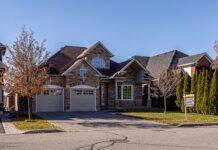Pending home sales increased 6.1% in May, compared to April – the largest month-over-month gain since April 2010, according to the National Association of Realtors' (NAR) Pending Home Sales Index.
The increase, however, was not enough to offset the sluggish sales seen during the first quarter: Despite the jump in contract signings, pending sales were still 5.2% below the level seen in May 2013.
All four regions of the country saw increases in pending sales, with the Northeast and West experiencing the largest gains.
In the Northeast, where sales had slowed considerably during the first quarter, pending home sales jumped 8.8% to reach 86.3 on the index – about 0.2% above a year ago. In the Midwest, the index rose 6.3% to reach 105.4. In the South, pending home sales advanced 4.4% to an index score of 117.0, a drop of 2.9% compared to a year ago. In the West, pending sales rose 7.6% to reach 95.4 on the index – however, this is 11.1% below that of May 2013.
About 27% of the pending sales were to first-time home buyers, according to the report.
In a release, Lawrence Yun, chief economist for NAR, forecasts that home sales will pick up in the second half of the year.
‘Sales should exceed an annual pace of 5 million homes in some of the upcoming months behind favorable mortgage rates, more inventory and improved job creation,’ Yun says. ‘However, second-half sales growth won't be enough to compensate for the sluggish first quarter and will likely fall below last year's total.’
Yun, however, cautions that affordability and access to credit is still an area of concern, especially for first-time home buyers, who often carry student loan debt and lower credit scores.
‘The flourishing stock market the last few years has propelled sales in the higher price brackets, while sales for homes under $250,000 are 10 percent behind last year's pace,’ Yun says. ‘Meanwhile, apartment rents are expected to rise eight percent cumulatively over the next two years because of tight availability. Solid income growth and a slight easing in underwriting standards are needed to encourage first-time buyer participation, especially as renting becomes less affordable.’
Yun expects existing-home sales to decline 2.8% this year to 4.95 million, compared to 5.1 million sales of existing homes in 2013. The national median existing-home price is projected to grow between 5% and 6% this year and in the range of 4% to 5% in 2015.
For more, click here.










